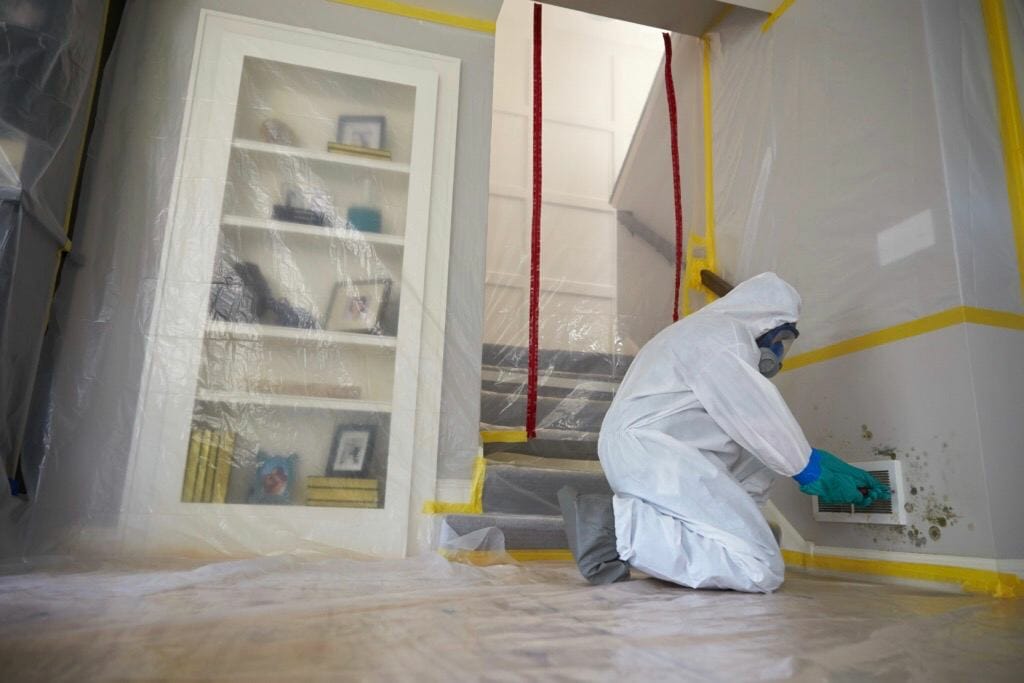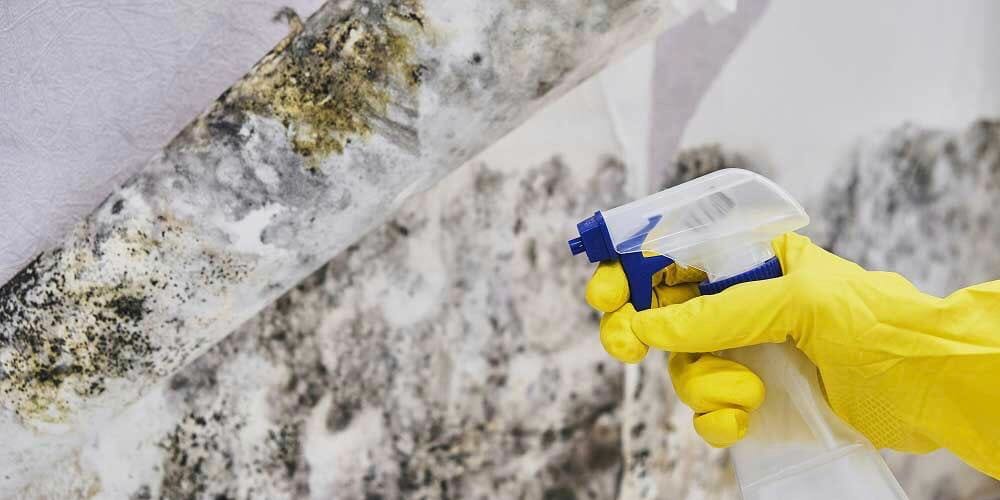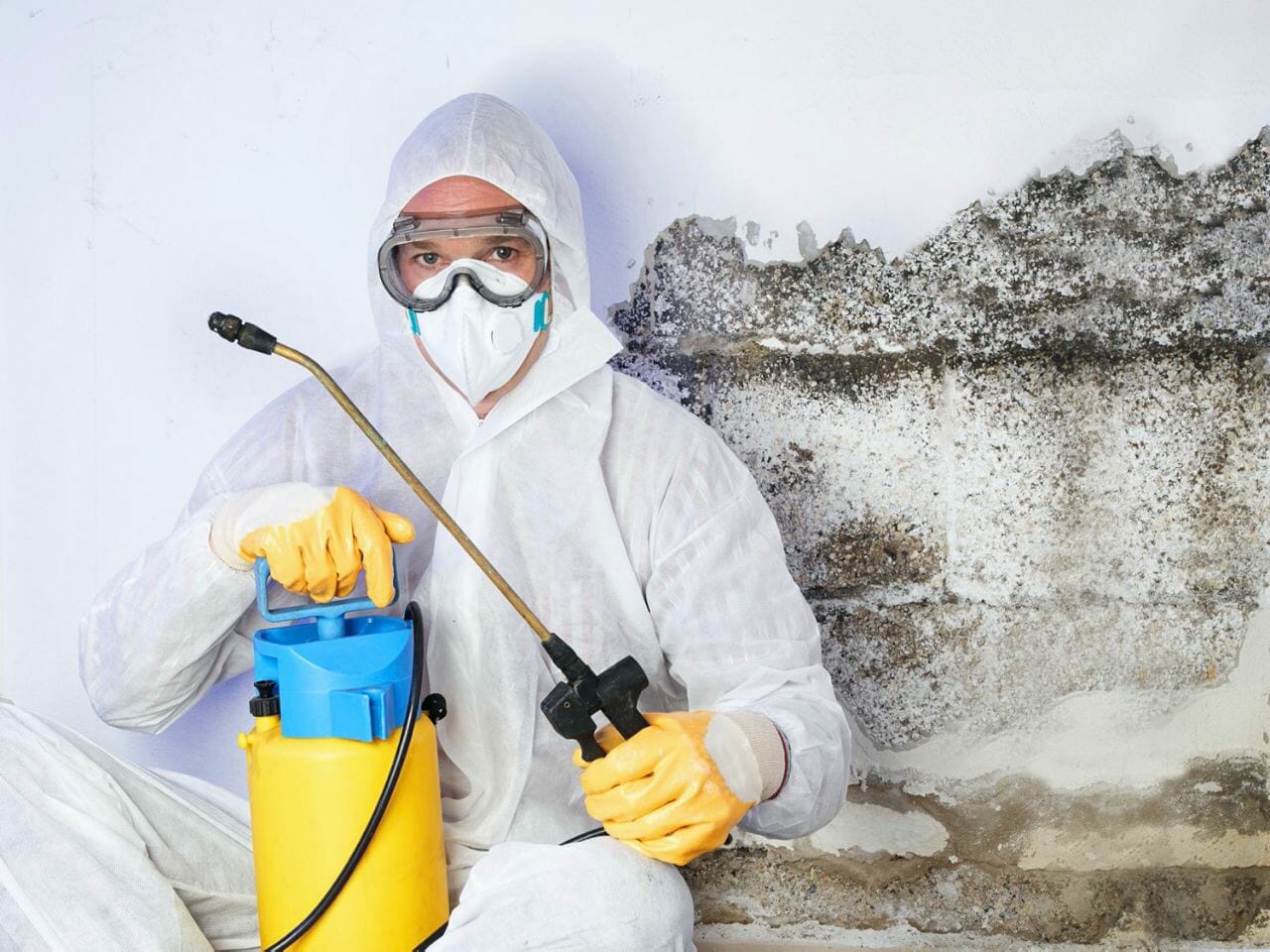Mold removal is also referred to as mold “remediation”, because, the truth is, you can’t get rid of it completely – which can sound rather scary, but the reality is that even though mold is technically present, it only becomes a problem when left unchecked and when it starts causing damage.
The mold removal or remediation process takes 1 – 2 days to complete on average. There are several factors that have to be taken into consideration such as the amount of mold and its location. Larger jobs in the attic, basement, and other parts of the house can take as long as 3 – 5 days.
| Location | Low | High |
|---|---|---|
| Bathroom | 2 hours | 12 Hours |
| Basement | 1 day | 2 days |
| Attic | 1 day | 2 days |
| HVAC | 2 days | 3 days |
| 1,500 sq. ft. house | 2 days | 5 days |
| 2,500 sq. ft house | 3 days | 5 days |
Average time: 1 – 2 days
How much does mold removal cost?
If you opt for the mold removal service of a company that specializes in mold removal, average cost is $432 – $5,210.
One of the main factors is on how far the mold has spread. Besides charging additional fees (for example, in case the mold is in a more difficult area of the house and furniture or mold carpet needs to be removed), the company will most likely charge per square foot.
What this means is that if the mold infestation is not very serious, you won’t end up with too big of a bill. However, more high-end contractors will charge more per square foot, which is why it’s recommended to do a bit of research beforehand on the company that you would like to hire, just so you won’t have any surprises at the end of the operation.

What chemicals do mold removers use?
When it comes to chemicals used to for the removal of mold, the tribes are split. Some contractors use chemicals such as bleach or products which contain harsh chemicals, while others opt for less extreme measures. Bleach is not considered to be a good solution for mold, not only being not approved by EPA, but also being very efficient in certain situations. Other chemicals that can be used for mold removal are hydrogen peroxide or ammonia.
When it comes to contractors that provide “non-toxic” ways to remove mold, chances are the price will be higher.

Professional vs DIY mold removal
Both options have their own advantages and disadvantages. While you might be well-intentioned when it comes to mold removal, if the problem is too serious then you might be better off hiring a contractor. On the flip side, if things are not extreme, then you could probably handle the situation.
Pros for professional mold removal
- Experience – Some companies have been in the business of removing mold for a long time, so they’ll know quickly how to tackle the problem.
- Safety – Not only will you not be working yourself with any chemicals, but you will probably be able to feel assured that the mold is completely removed at the end of the process.
Cons for professional mold removal
- Expensive – Even if the mold covers only a small area of the house, chances are that you will still have to pay a fair bit of money.
- Unsafe – While hiring a contractor might provide the safety that the problem was actually removed, it might be unsafe from a health standpoint if the expert uses certain chemicals.
- Scammers – While mold removing companies might do good work, there are also scammers in this industry that could lead you to believe that the problem is bigger than it really is.
Pros for DIY mold removal
- Cheap – Unless the problem is very serious and you have to fix a lot throughout the house in order to get rid of the mold, you will most likely end up spending less money if you do things yourself.
Cons for DIY removal
- Equipment – If you realize that the problem is more serious than you initially thought, you will end up having to do more work, which not only takes more time, but you will need to have the proper tools, which you might not have.
- Skill – While you might feel ready to tackle the problem, if you don’t have a lot of experience with mold removal, you might end up not removing it properly or entirely.
- Time-consuming – If you’re a beginner when it comes to mold removal, you won’t have the experience to go quickly through the process, and you will also want to be through. All of this adds to a lot of necessary time – which will increase if the problem is serious.

Can mold be completely removed from a house?
The short answer is no. This is why, as previously stated, the process is also known as “remediation”. There are various things you can do in order to ensure that it doesn’t become a problem, such as keeping the humidity to a minimum.
In case you went through the whole remediation process and mold made its appearance again in quick fashion, there’s a chance the problem wasn’t tackled properly. What this means is that the issue is a lot deeper than initially thought.
If you chose the DIY route and removed mold yourself, you can make sure that the problem has been actually dealt with by hiring someone to test the area. A visual inspection is definitely helpful, but it might not guarantee that mold is gone.
Will mold come back after removal?
If the climate is damp, there is a chance that mold will come back. Given that mold is always present, it can quickly become a problem once again, even if it was thought removed. Moreover, it can spread fairly quickly, which is why it should be taken care of before it becomes a serious problem – not only so it doesn’t ruin your house but so it doesn’t ruin your health as well.
When detected again, mold spots should be handled before they spread. If they keep appearing in the same area then either the initial removal wasn’t actually complete and the problem is deeper, or the climate is not favourable for the area – too much humidity.
How long does mold take to grow?
Mold can start growing in approximately 1 or 2 days, which represent the germination period. However, it only becomes visible after up to 21 days. It can virtually grow anywhere, from rooms that are used every day to basements that you enter only once a month.
There are different types of mold, but most of them thrive on moisture and some on the moisture they take from air. It’s important to remember that mold can grow on virtually any wet materials – with the exception of things like metal or concrete, due to the fact that they are inorganic materials.
Because it only becomes visible after almost 3 weeks, it might be difficult to know if you actually have mold in the house or not. The best thing you can do to keep the growth in check is to keep surfaces dry. If there was any leakage or flood in the last 24h or 48h, you will have to make sure that the excess water was removed and things are dry so that the growth process doesn’t begin.
Does mold spread fast?
Mold grows fast and it spreads just as fast if it has what to feed on. Mold needs at least 20°C to grow – however, if the temperature is freezing cold or scolding hot, there is still no guarantee that mold will be eliminated completely.
As soon as mold becomes visible, the removing process should start, because there’s a good chance that it won’t suddenly stop spreading. Not only do you want to get rid of the mold that already colonized and made its appearance so that it won’t keep growing, but you also want to get rid of it for health reasons.
How does mold remediation work?
While it’s better to keep things in check beforehand so that mold doesn’t start growing, if you’re faced with the problem then it definitely needs fixing as soon as possible. The are a number of logical steps to mold remediation:
- Assessing the problem – obviously, before everything starts, we need to understand how serious the problem is and what kind of work needs to be done.
- Containment – the process of containing the issue is extremely important, so that, once the removing procedure starts, you don’t want the spores to land on other surfaces and create further problems.
- Removal – the actual process of mold removal (or remediation) involves getting rid of materials that where infected and spraying biocides once the area is clean.
- Inspection – In order to make sure that mold is no longer a problem, a further inspection is necessary.
- Fixing underlying issues – if, for example, the mold grew thanks to the moisture provided by a leaky faucet, then the faucet needs fixing so that it will stop providing nourishment for the mold to come back. This can also be done before the whole process begins.







